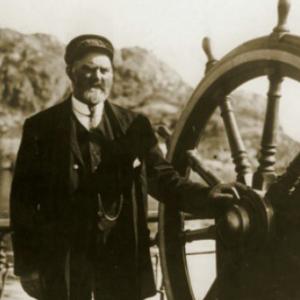SS Bruce
Robert Gillespie Reid was a Scottish-born contractor who had successfully completed a number of challenging projects for both the Canadian Pacific and Intercolonial railways. His first contract with Newfoundland’s colonial government was signed in 1890, and the pace of construction for Newfoundland’s railway soon leaped forward.
So substantial was his progress that by 1893 the government had decided they wanted the line completed coast to coast. They wanted Reid to build and operate not only the railway, but the ferry service that would link it to the rest of North America.
Reid’s Scottish heritage came to the forefront in both the choice of name and builder for his new ferry. But, unlike the railway, the pride of his fleet was not to be built on a shoestring.
The SS Bruce was a classic steamer of the Victorian age, elegant but powerful. Built on the Clyde by the A. & J. Inglis shipyard, the 1,100-ton ship arrived in St. John’s on 13 October 1897, with Captain Patrick Delaney in command.
A date was set for the start of service. The Reid Company advertised a special excursion to mark the inauguration. July 1st was Canada’s national holiday, and in celebration there would be a fair in Sydney. For Newfoundlanders with a sense of history, the temptation was too much to resist. Approximately fifty ladies and gentlemen booked passage.
At 7:20 p.m. on 29 June 1898, the first “Foreign Express” pulled out of the station in St. John’s. At 10:45 the following evening, two locomotives proudly rolled their six-car train onto the wharf at Port aux Basques. Just before midnight, with all passengers comfortably aboard, she set sail for North Sydney.
The graceful Bruce stood alongside, ready for her date with destiny.
By breakfast time, history had been made. The SS Bruce was at dockside in North Sydney, and the passengers were ashore in Canada, a mere 36 hours after leaving St. John’s. It would be another fifty years before Newfoundland would choose to enter Confederation, but these happy travellers were ready to join in the celebrations of their host country’s birthday.




